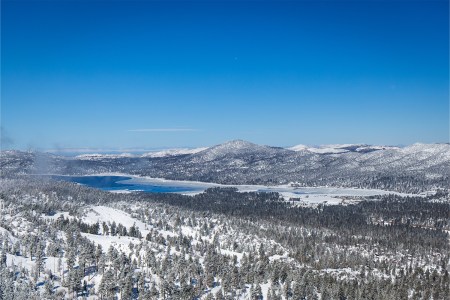It’s going to be a cold, wet winter, according to this year’s Farmer’s Almanac. Which means…it might. Or it might not.
The Almanac has been around since 1818, offering long-range weather predictions. And most publications pretty much take the publication’s word as, well, not gospel but without critique. Lifehacker, for instance, recently mentioned the Farmer’s Almanac Winter 2024 Extended Weather Forecast and its findings (early winter, unseasonably cold in Texas, etc.) without offering any context or pushback. (We should note there is also an Old Farmer’s Almanac that started a few decades before and is still going. They haven’t published their winter predictions yet.)
A Historically Snowy Winter Means You Can Ski California on the Fourth of July
Who says the season has to end?Whatever the Almanac, they’re pretty much like Punxsutawney Phil seeing his shadow on Groundhog’s Day — we’re not working with great predictive power here. (Phil’s right about half the time.)
They’ll dispute this. The Farmer’s Almanac currently claims it’s “been using the same formula for over 200 years based on math. As for the accuracy, readers claim we’re accurate about 85% of the time, which we think is pretty good.” Which would be incredible if true…but, again, it’s probably closer to 50%. Both the Farmer’s Almanac and the Old Farmer’s Almanac have or still utilize several dubious methods beyond math, including astrology and sunspots, to chart their predictions.
When analyzed about past predictions, neither publication holds up. A 2014 comparison of both almanacs to what actually happened found that “neither Almanac offered consistently accurate temperature predictions last winter for the US.”
There is some good information in the Almanac, but it’s also something that any decent weather service could have told you. (For instance, the Global Forecast System — the computer model run by the National Weather Service — only produces forecasts a few weeks in advance.) Here’s the Almanac using a general scientific consensus about the winter involving El Niño and couching it in their own history: “There are indications that an El Niño (an unusually high-water temperature off the Pacific Coast of South America), will be brewing in the latter half of 2023, lasting into the winter of 2024. If we consider that alongside our tried-and-true forecast formula, it means that cold temperatures should prevail throughout the country and bring snow, sleet, and ice.”
And if we don’t consider their “tried-and-true forecast formula,” that all still might be true…because: winter.
Thanks for reading InsideHook. Sign up for our daily newsletter and be in the know.



















